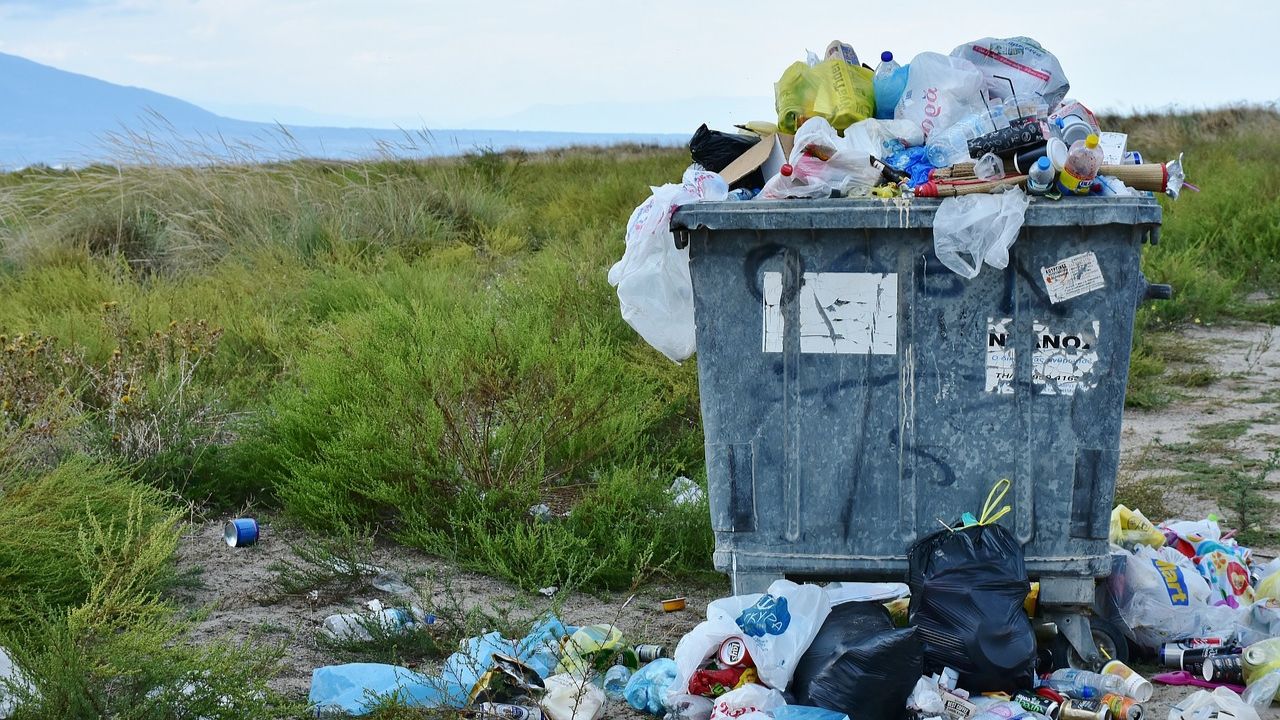Humanity has relied on waste management systems since the beginning–it’s just the nature of things. Archeologists worldwide are finding trash deposits that tell the story of our existence.
But global waste is outpacing the world’s population. We create multi-millions of tons of hazardous waste, food waste, electronic waste, and ocean pollution at alarming rates.
As a prosperous nation, the United States generates 12% of global waste. Municipal solid waste trash facts are a direct spin-off from consumption. We can bury waste, but we can’t escape pollution facts.
Top 10 Jaw Dropping Facts About Trash
- Annually, we dispose of a staggering 2.12 billion tons of waste
- Annually, less than 20% of the global waste is recycled
- Americans, constituting 4% of the world’s population, produce nearly 12% of its waste
- In the US, each individual generates about 4.9 pounds of waste daily
- An average of 1,500 pounds of waste per individual is deposited into landfills
- Food was the largest component in the landfills in 2018
- The Apex regional landfill is the largest one in the world with 2,200 acres of land
- By 2050, it is expected the MSW will reach 3.4 billion metric tons
- Athen started one of the first garbage waste management services back in 500 BC
- Almost 685 gallons of oils get saved by recycling 1 tonne of plastic
Trash Facts
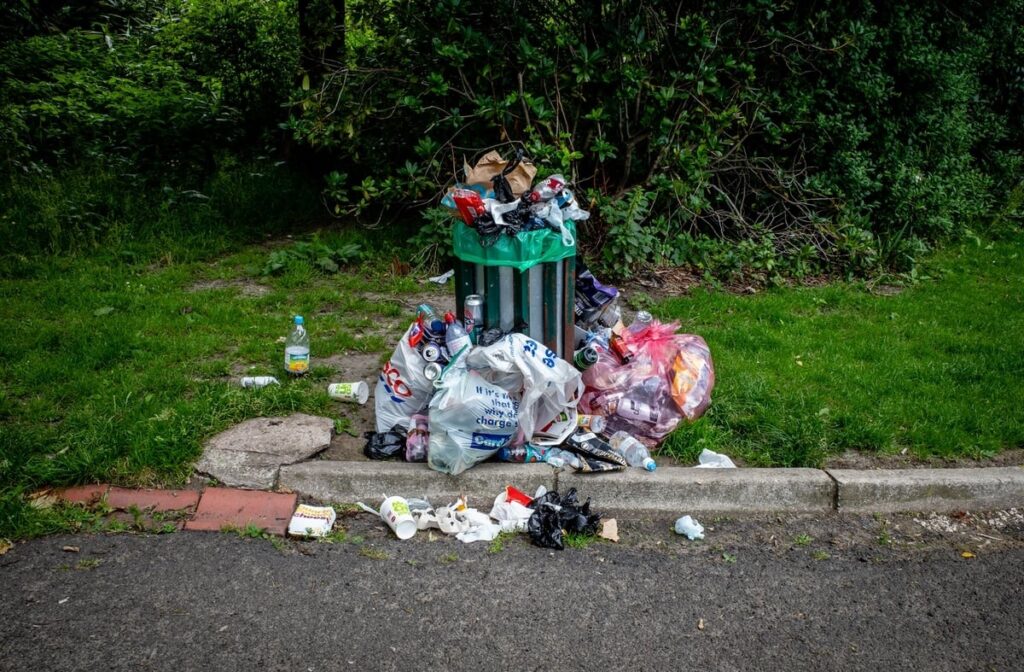
Most communities struggle with municipal solid waste management. Garbage trucks and recycling bins cost money, yet recycling creates a $200 billion dollar industry, and we’re not at recycling capacity.
Annually, We Dispose of a Staggering 2.12 Billion Tons of Waste (World Bank)
Undoubtedly, municipal solid waste collection is prolific. Despite the trashman knocking on our door, 33% of waste is discarded carelessly and seeps into our water supply, and plastics end up in the ocean.
Prosperous nations generate 34% or 683 million tonnes, although they’re only 16% of the population.
By 2050, It Is Expected Municipal Solid Waste (MSW) Will Reach 3.4 Billion Metric Tons (World Bank)
Sure, Americans throw a significant portion of waste away. However, as other nations experience greater wealth, their waste generation increases. High-income countries can expect to see a 19% increase by 2050, but low to middle-income nations will breach the 40% mark.
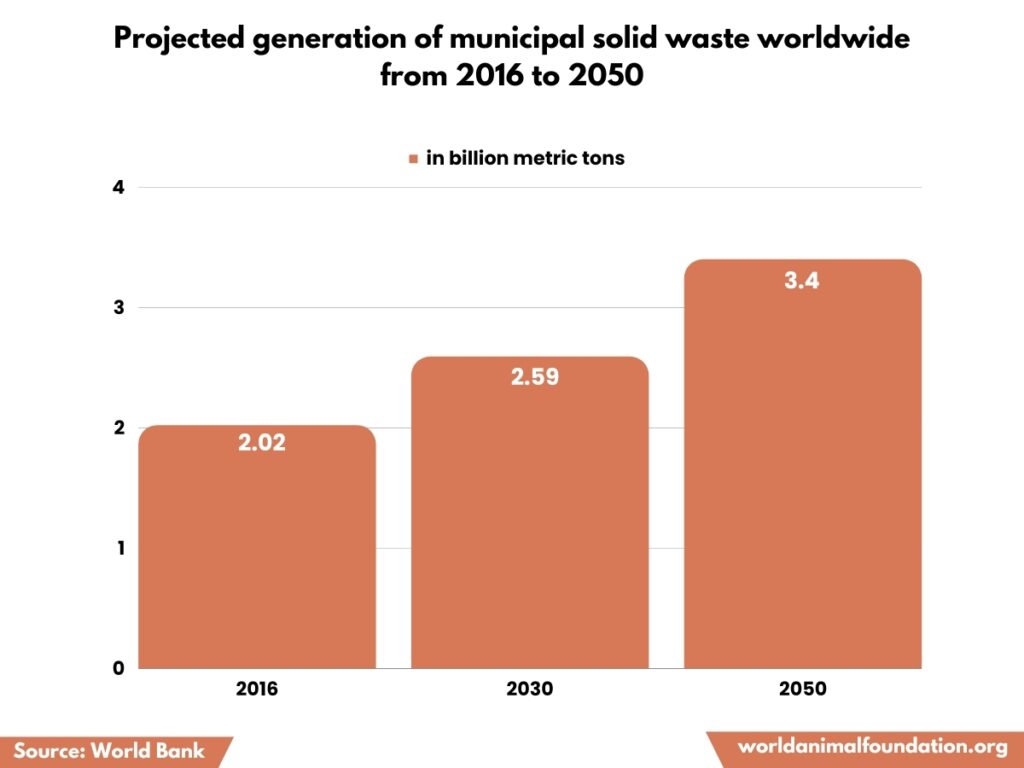
Annually, Less Than 20% of the Global Waste Is Recycled (World Bank)
We’re on track to increase global waste by 70%. We created 242 million tonnes of plastic waste (12% of solid waste), and only 20% of waste is recycled.
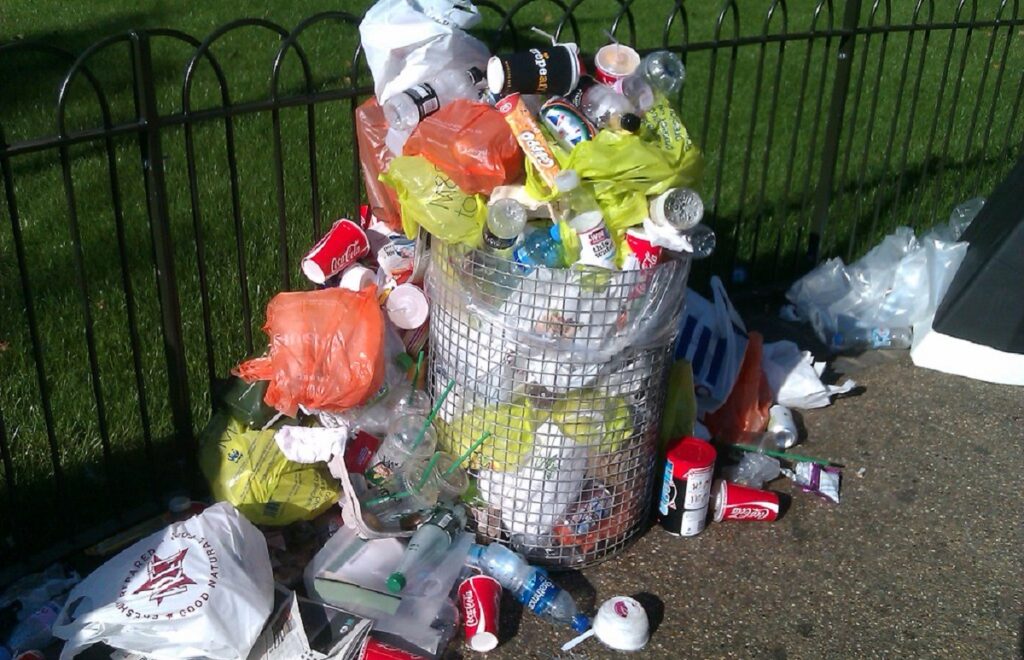
Globally, Almost 92 Million Metric Tons of Textile Waste Is Produced Annually (NIH)
The garment industry produces 100 billion articles annually, and every second, a garbage truck collects our throw-away clothing. We’re on target to generate 134 million tonnes within the decade.
Americans, Constituting 4% of the World’s Population, Produce Nearly 12% of Its Waste (Environment America)
Facts and stats create awareness, but Americans throw 292 million tons of solid waste into the trash. That’s enough garbage of 1800 lbs per person annually and beyond the global average.

The US Creates Enough Trash Daily To Fill 63,000 Trucks (ScienceTrek)
That amount of garbage could get us to the moon in two years if we lined up all the trucks. On average, we toss between 5 to 7 lbs of disposal materials daily and produce greenhouse gases.
In a Lifetime, Each American Leaves 90,000 Pounds of Trash for Upcoming Generations (Waste Management)
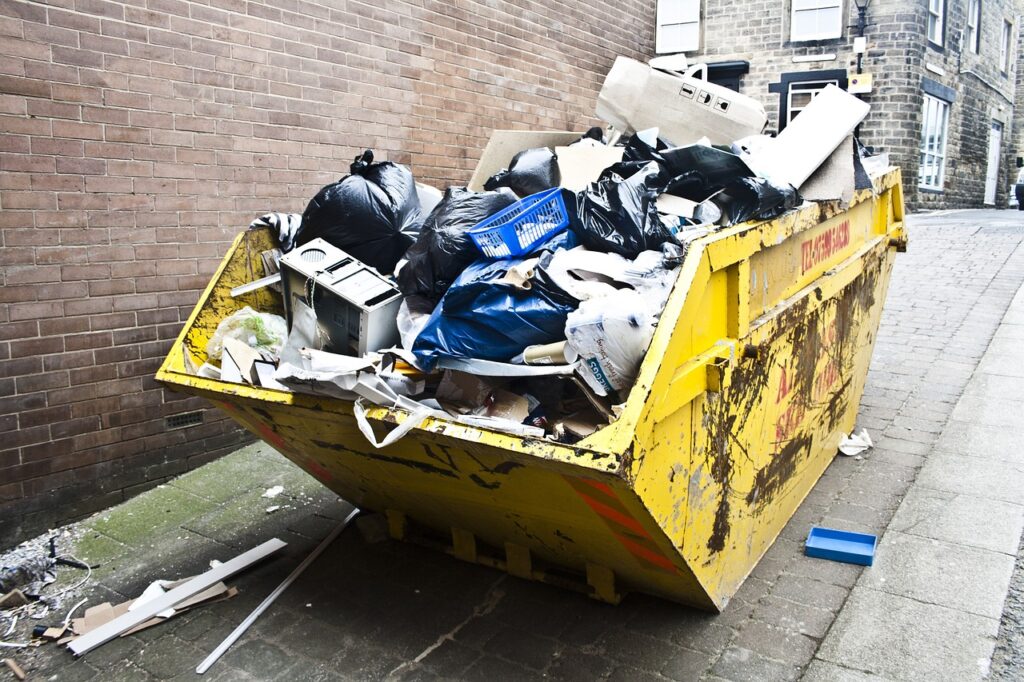
We love our children, yet we’re leaving them a trash legacy. Truthfully, 90,000 lbs is a conservative number; based on life expectancy rates, it’s closer to 130,000 lbs.
As per US Stats, Each Individual Generates an Average of About 4.9 Pounds of Waste Daily (EPA)
Everyone contributes to the problem and solution. Americans throw 1800 lbs away, and 62% of generated waste material creates air pollution when burned by incinerators.
As per Stats, the Pandemic Generated Over 8 Million Tons of Global Plastic Waste (PNAS)
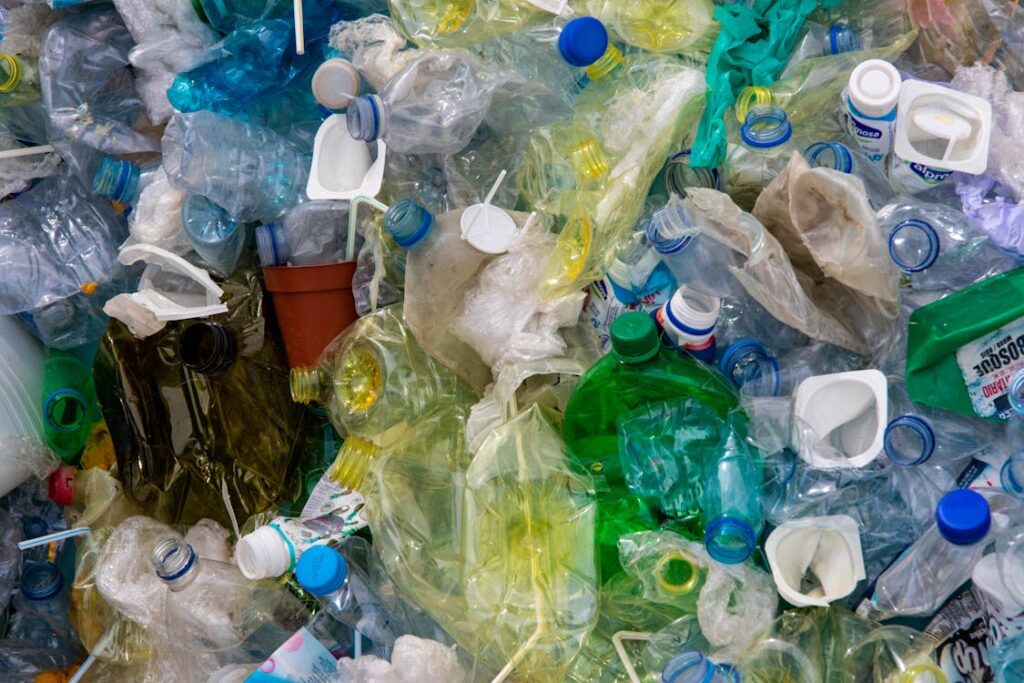
The pandemic sucked and contributed to marine debris from increased medical single-use plastics. Of that 8 million tons, 25,000 tons circle our oceans.
It’s Been Reported That Multiple Ocean Garbage Patches Exist Worldwide (NOAA.gov)
Where have you been not to know about the Great Pacific Garbage Patch (discovered 25 years ago) and its four sister gyres? These garbage patches are visible from space.
According to GITOC, in 2020, There Was an Increase of Almost 280% in Illegal Plastic Disposal (GITOC)
A Global Initiative Against Transnational Organised Crime report didn’t only blow the horn on illegal plastic waste. It sued Biffa, a massive British waste management company, for human trafficking.
In the US, Almost 2,500,000 Plastic Bottles Are Utilized per Hour (SCCMO)
It’s bad news for soda and water companies that 80% or 2 million of recyclable plastic bottles are thrown away, many by littering every hour.
Landfill Facts
Landfills are disgusting heaps that release methane, carbon dioxide, and water vapor. Combined, these gases impact climate change.
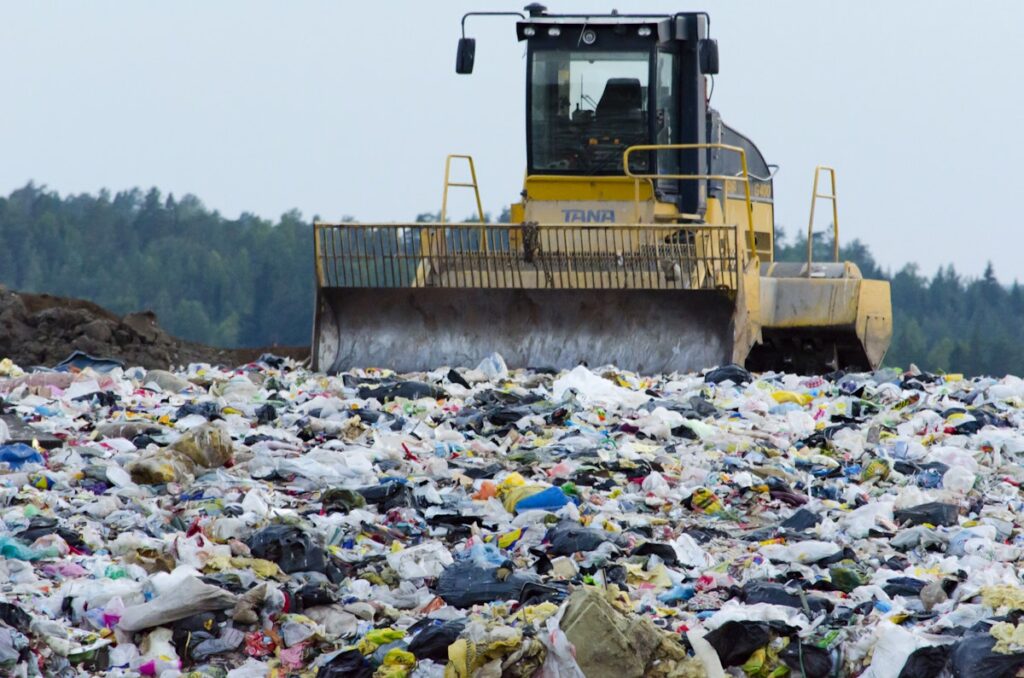
Annually, an Average of 1,500 Pounds of Waste per Individual Is Deposited Into Landfills (National Geographic)
Statistics can be fluid and changed based on the criteria of the research. According to the EPA, that figure is higher and based on 4.9 lbs or 1800 lbs annually per average person.
The EPA States That Yard Waste, Including Grass Clippings, Forms the Second-Largest Portion of Landfill Waste in the US (EPA)
North Americans are avid gardeners, and according to 2018 EPA stats, yard trimmings amounted to 35.4 million tons or 12.1% of MSW. Composting programs suggest 22.3 million tons had a 63% composting rate.
Almost 146.1 Million Tonnes of MSW Were Landfilled in 2018 (EPA)
EPA released startling figures of 146.1 million tons of MSW in landfills. Plastic came in second at 18% and is recyclable. Food took home first with 24%.
Food Was the Largest Component in the Landfills in 2018 (EPA)
Food scraps contribute the largest share of waste to landfills at 24%. Food waste is compost.
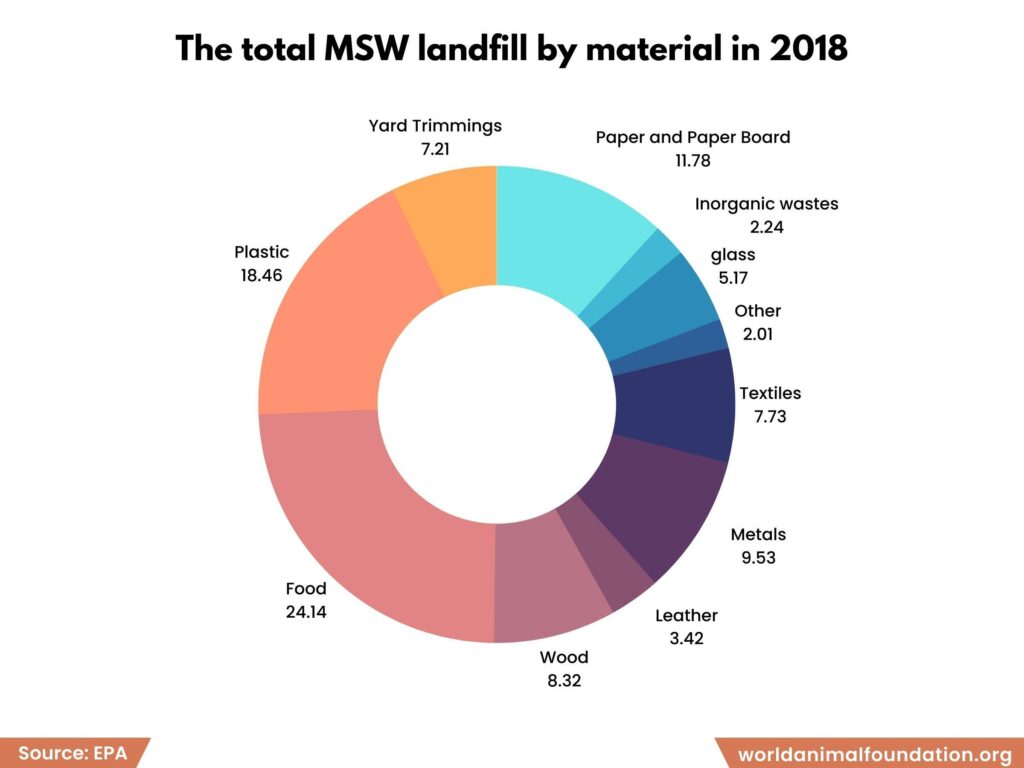
Around 35% of the Trash in Landfills Is Organic Waste Suitable for Composting (MDPI)
Organic waste is a grave concern in municipal solid waste facilities. Since food waste facts reveal that food waste is the most significant contributor with complex biochemical characteristics, it’s essential to understand the food waste statistics to ensure proper handling.
Active MSW Landfills in the US Reduced From 7,800 in 1988 to About 1,600 in 2004 (EPA)
The count of operational MSW landfills decreased to approximately 1,600. Well, now the stats have been updated. There are two private garbage companies, Waste Management, and Republic Services, and they own 480 landfills out of 2627.
Every Day, a Landfill in Indonesia Receives 7,000 Tons of Waste (Pulitzer Center)
Developing countries struggle with waste management. Bantar Gebang is one of the largest landfills in operation, and 1,200 trucks from Jakarta dump waste daily. It’s on schedule to overload by 2021.
The Apex Regional Landfill Is the Largest One in the World, With 2,200 Acres of Land (Owlaction)
Apex is the largest landfill in the world, with 2200 acres, and holds 50 million tons of garbage with a life expectancy of 250 years.
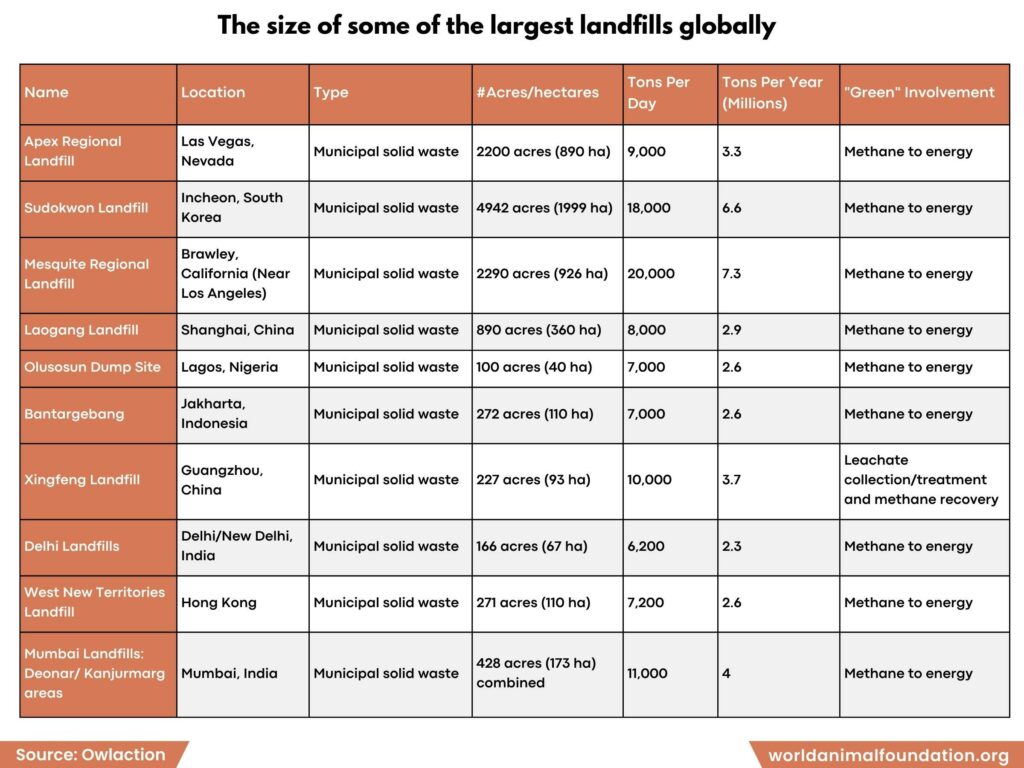
Around 8,000–10,000 Disposable Diapers Are Discarded Before a Child Is Potty Trained (TLC Pediatrics)
No doubt disposable diapers are an excellent invention. But! Americans throw 18 billion diapers into the trash and takes upwards of 500 years to decompose.
Even 500 Years After Their Disposal, Diapers Will Remain in Landfills (EPA)
Single-use (ha-ha) disposable diapers take centuries to decompose but never go away entirely. To keep one baby in diapers for a year costs 22 kg of petroleum and 136 kg of wood.
Dense Landfill Conditions Result in Anaerobic Degradation, Producing Substantial Methane Gas (Science Direct)
Anaerobic degradation is a fancy term when microorganisms break down biodegradable substances without oxygen. It’s used to break down waste and fuel. US landfills released over 122.6 million metric tons of carbon dioxide (MMTCO2e methane) in 2021.
Over 151 Million Cell Phones Are Dumped in US Landfills Annually (WF)
That figure suggests half of Americans get a phone yearly and contributes to the over 40% of heavy metals in landfills from e-waste.
Trash Statistics
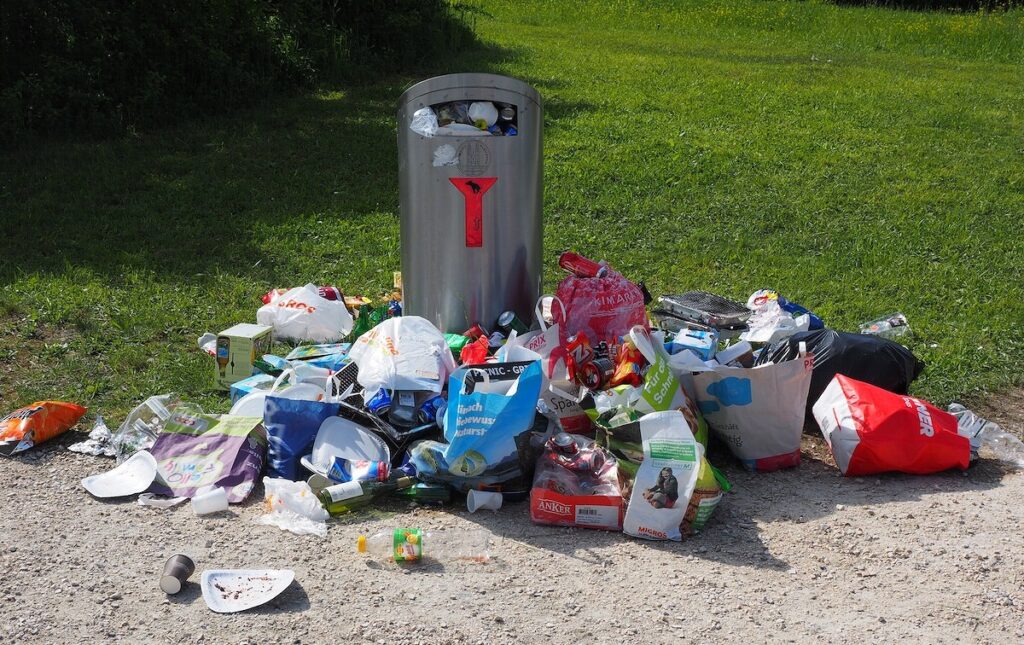
These trash facts sure stink.
Household Trash Is Composed of Approximately 65% Packaging (Earthdate.org)
Recycling a ton of trash costs less, yet Americans throw 65% of recyclable packaging into the garbage, contributing to the ⅓ of packaging material that can easily be recycled.
Around 1.3 Billion Tons of Food (Roughly One-Third of Global Production) Is Wasted Yearly (WFP)
Globally, we have over 300 million food insecure people, yet a third, equivalent to $1 trillion, of our food is wasted. This 1.3 billion ton could feed 2 billion people.
Every Day, Americans Discard About 150,000 Tons of Food (The Guardian)
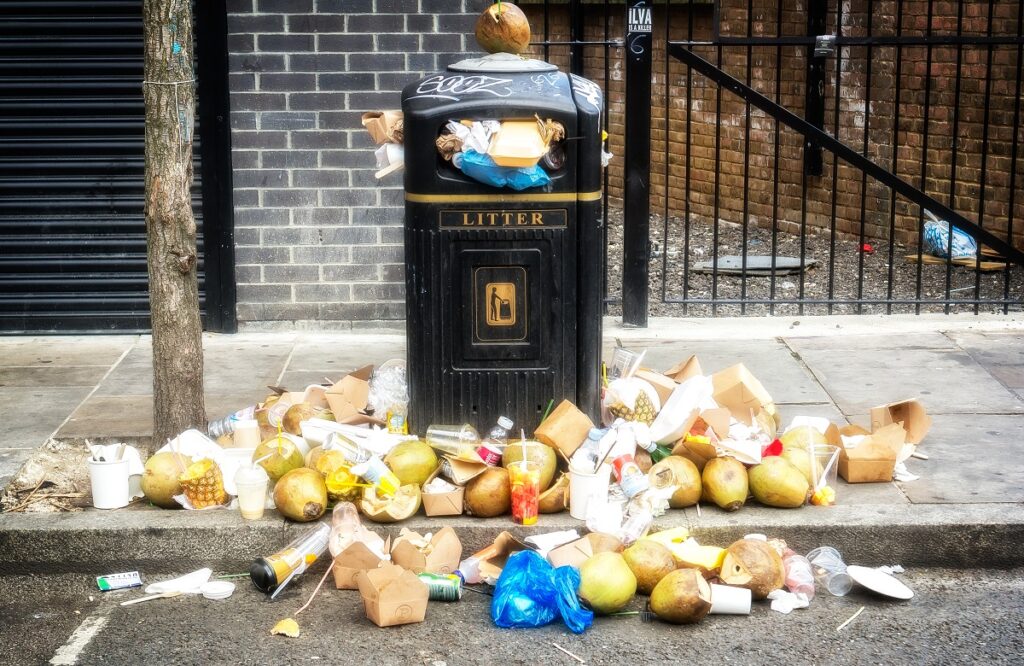
Every day, Americans throw one pound of food away; however, that waste also includes scrap from fruits and vegetables. Mathematically, it accounts for about ⅓ of the caloric intake we consume.
Each Year, Over 14 Billion Pounds of Garbage Is Deposited Into the Oceans (NPS.gov)
What we toss into our oceans is heartbreaking. Tires, cardboard boxes, cups, plastic bottles, fishing lines, toys, shoes, and more fill our oceans, harming our wildlife and eventually humans.
Annually, the World Generates More Than 53.6 Million Tons of Electronic Waste (Geneva Environmental Network)
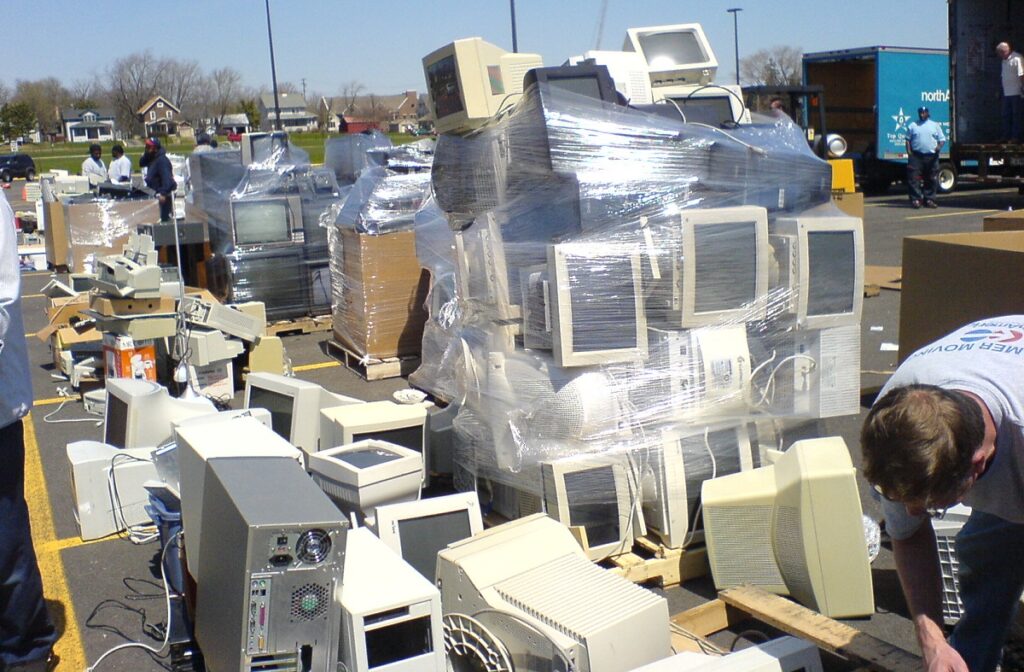
United Nations figures say every one of us produces 7.6 kg of e-waste per day, and only 17.4% is recycled properly, removing toxic chemicals and metals.
Every Day, Residents of New York City Discard Enough Trash To Fill the Entire Empire State Building (Lexicon Lightening Technology)
It’s a mindblowing trash fact. Since 1992, we’ve dumped 14 billion pounds of trash into the sea, and 20,000 cars and 4,000 trucks and buses end up disposed of in America every day.
Waste Management Facts
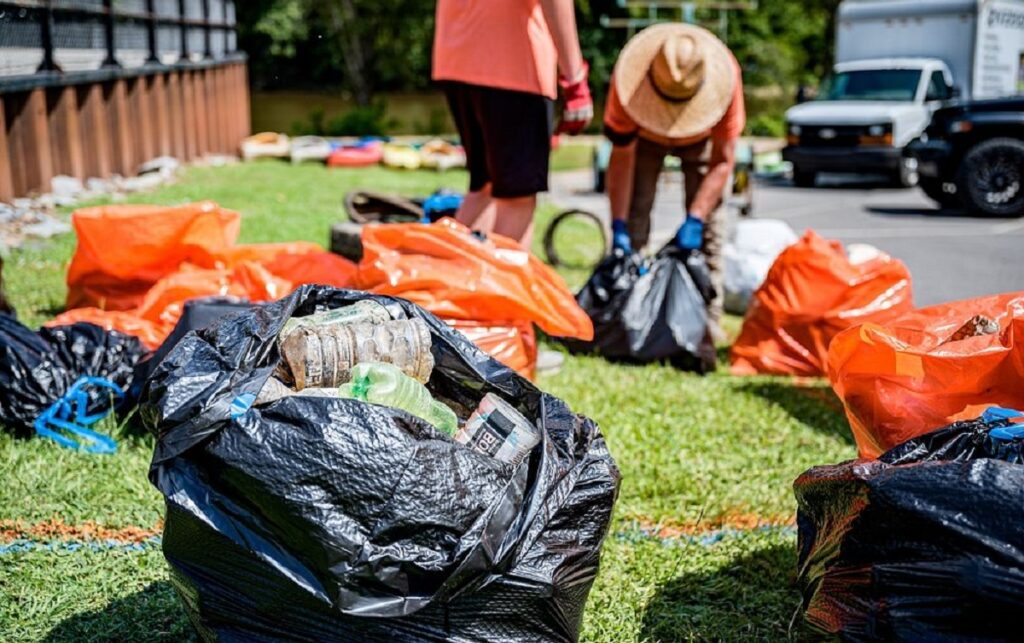
Archeologists unearthed the first ‘dump’ dating to 3000 B.C. in Knossos, Crete. Composting and recycling was a common practice in China in 2000 B.C. What happened?
Athen Started One of the First Garbage Waste Management Services Back in 500 BC (Taras.org)
In Athens, servants hauled household waste to a dump 1.5 km away. Romans introduced a collection service, and during the Middle Ages, people threw garbage into the street.
In the US, the Current Recycling Level Is 21.4% (Recycling Across America)
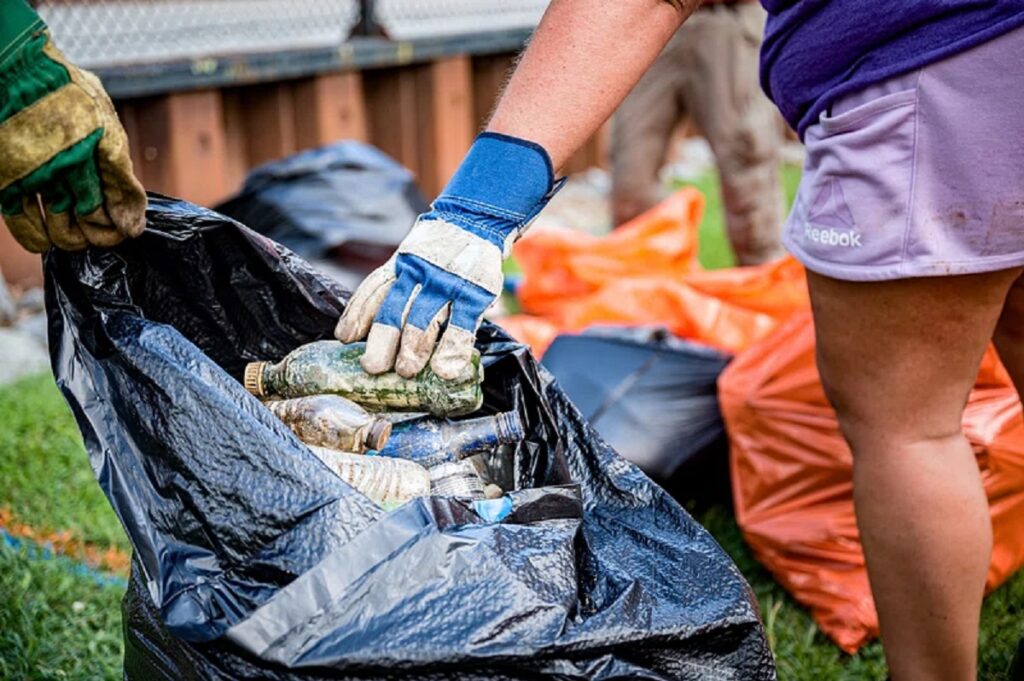
Despite someone coming to our doorstep, in America, that number is a paltry 21.4%. Plastic is collected at 15% and upcycled at 9%.
A Recycling Rate of 68.2% Was Achieved by Recycling Paper and Newspapers Back in 2018 (EPA)
The EPA has a 35-year-long history of compiling waste management data. Americans recycle paper products and corrugated cardboard at a much better rate. Paper and paperboard contribute 23.05% of total MSW (2018).
Paper and Paperboard Production Dropped From 87.7 Million Tons in 2000 to 67.4 Million Tons in 2018 (EPA)
Paper waste fluctuated but showed a decrease between 2000 and 2018, while food waste and yard trimmings rose. Deforestation loss is estimated at 10 million hectares annually, and we burn 200,000 acres of rainforest daily.
Almost 685 Gallons of Oil Get Saved by Recycling 1 Tonne of Plastic (Waste Management)
Recycling plastic is beneficial for all. It saves 5774kWh of electricity and 98 million BTUs of energy and landfill space. Plastic pollution is destroying marine life and contributing to climate change.
Piggeries Revolutionized the US Back in 1900 (the Austin Chronicle)
Pigs have roamed Earth for 40 million years and have a low emission factor compared to other livestock. Enteric fermentation from swine produces 1.5 kg of methane per pig per year, while ruminant animals generate 30% of anthropogenic methane.
The First Federal Waste Management Laws in the US Were Introduced in 1965 (EPA)
The SWDA, or Solid Waste Disposal Act, passed Congress and was the first effort to implement waste disposal methods. Global industrialization increases household standards but causes air and water pollution and soil contamination and depletes natural resources.
A Recycled Plastic Bottle Preserves Energy Equivalent to Powering a Light Bulb for 4 Hours (Climate of Our future.org)
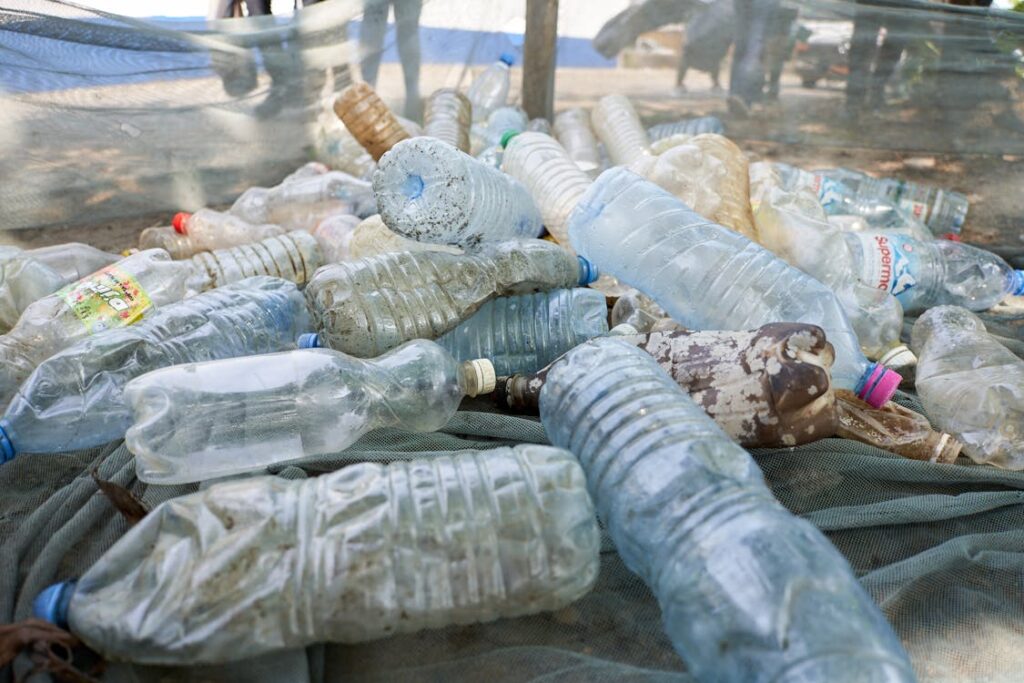
Americans throw close to 2 million plastic beverage containers away every hour, which means they could power 8 million hours of light.
Recycling One Ton of Aluminum Cans Saves 21 Barrels of Oil (EPA)
Aluminium is a metal that can be reused endlessly. One ton of aluminum cans saves 152 million Btu or 1024 gallons of oil.
Recycled Fiber Accounts for Over a Third of All Paper Production (EPA)
Americans recycle paper products at 60%, and recycling can generate between 7 to 57% energy savings. Paperboard consumes more at 40 to 150% when created from recycled materials.
The EPA Reports That Only 12.5% of E-Waste in the US Is Recycled (EPA)
Recycling e-waste from 1 million laptops saves enough electricity to power 3657 homes in the US for a year. One million recycled cell phones collect 35,274 lbs copper, 772 lbs silver, 75 lbs gold, and 33 lbs palladium.
Recycling a Million Laptops Conserves Energy Equal to Powering 3,500 US Homes (EPA)
Recycling makes a massive impact on our environment, consumption, and pollution rates, and 1 million laptops make enough power basically to power over 3,500 homes.
FAQs
Trash facts are brought to you courtesy of the WAF team.
What Do They Do With Garbage?
Garbage is collected, sorted, composted, or incinerated at local landfills.
What Does One Ton of Garbage Look Like?
Well, it’s not pretty. A ton costs you over $80 and stinks.
What Does One Ton of Garbage Look Like?
Mr. Depemster invented the first concept dumpster in 1935 for his construction company.
How Much Garbage Is Thrown Away Each Year?
A staggering 2.12 billion tons, or enough to fill trucks to circle our planet 24 times.
Approximately How Much of Our Trash Ends Up in a Landfill? 90% 75% 55% 20%?
According to the EPA, waste in landfills has decreased from 94% (1960s) to 50-55% of the amount we generated in 2018.
How Much Waste Does the Average Person Produce in a Lifetime?
Experts suggest that each of us generates 90,000 lbs of garbage.
The Average American Generates Approximately Between of Solid Waste per Day?
The average American generates approximately between 4.4 to 7.1 lbs of solid waste daily.
How Many Pounds of Trash Does the Average American Throw Away Each Day?
Between 4.4 to 7.1 lbs of trash are generated and thrown away each day.
How Many Landfills Are in the World?
The USA and Canada have over 6000 managed landfills. Europe may have as many as 500,000 waste management centers.
Trash and Recycling Facts Conclusion
The United States produces marine debris, garbage, greenhouse gas, tons of plastic, and sucks at recycling. Eventually, this negligence will corner us. It’s already affecting our health, bodies, water, and environment. It’s up to each of us to make a change.


